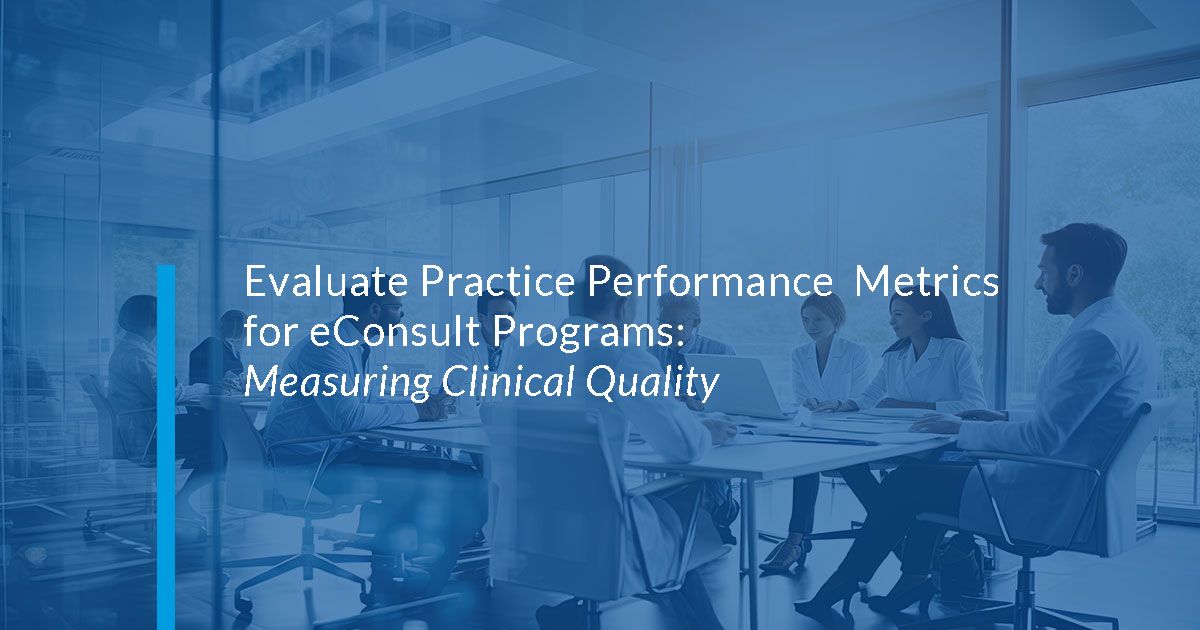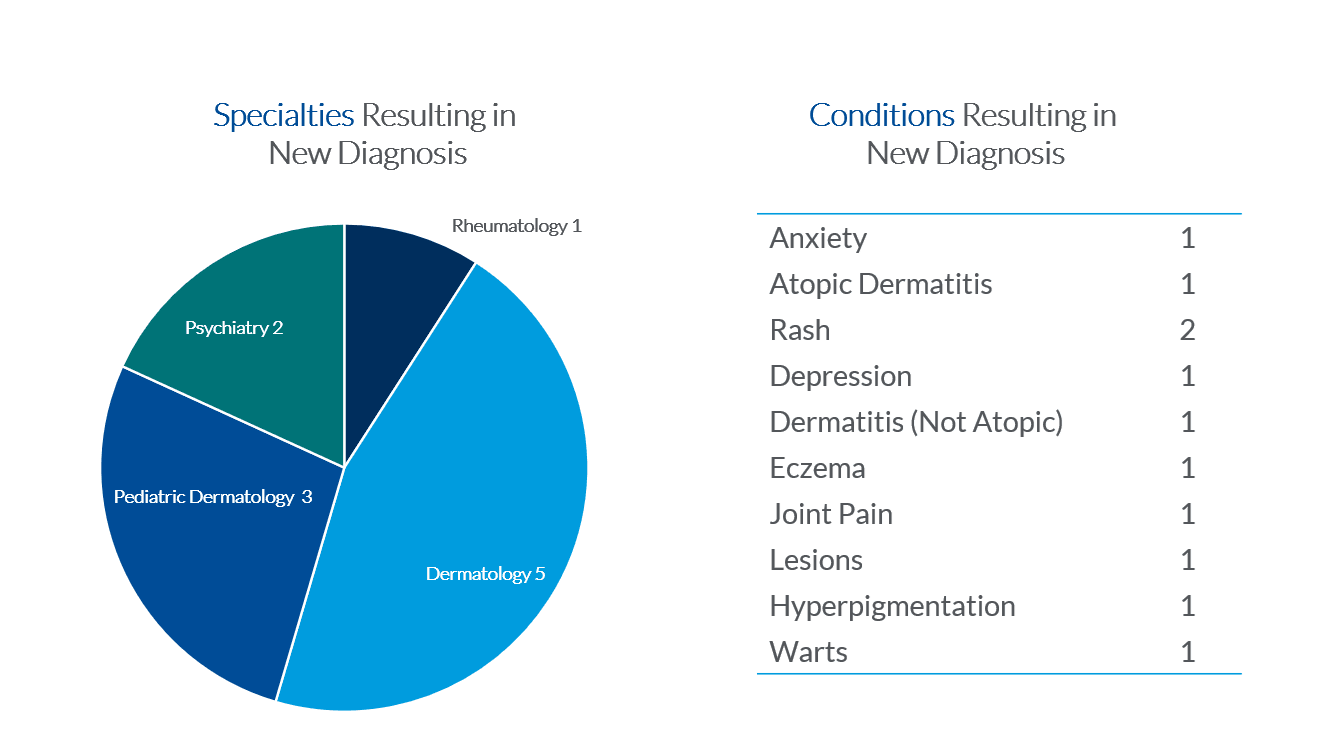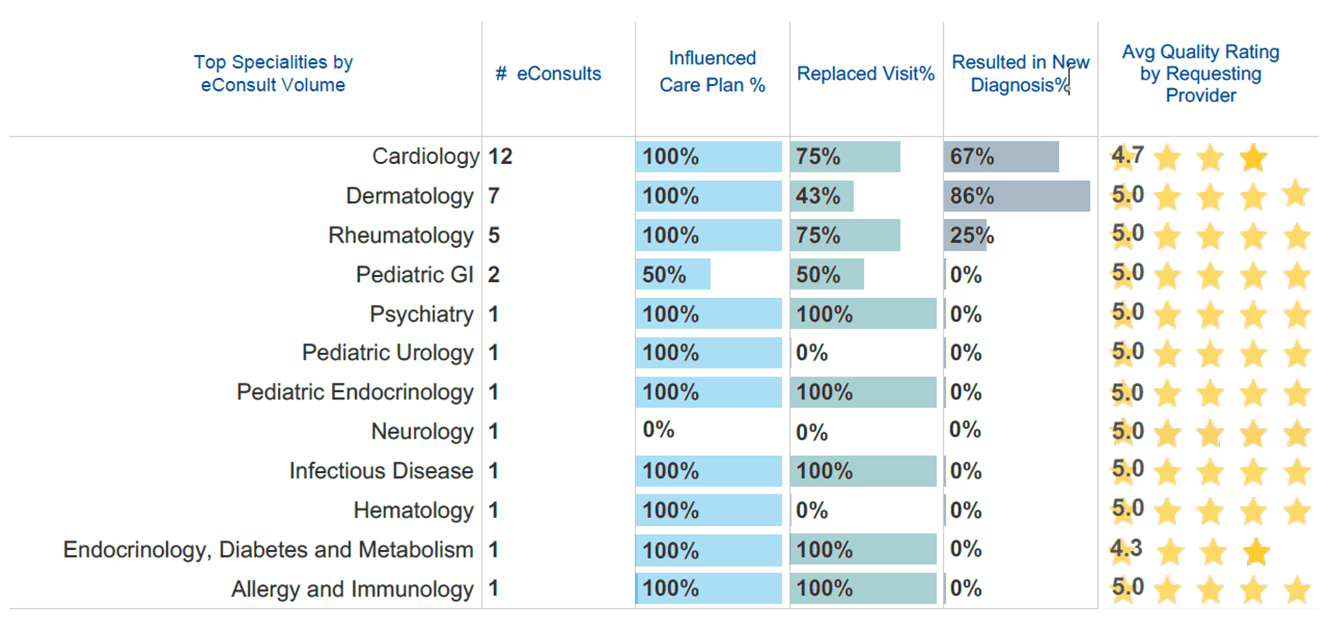
Multiple studies have shown that improved access to specialty advice and preventative care decreases the incidence of disease and patient mortality, resulting in better care outcomes. Preventive medicine proactively identifies and treats health issues before they develop into severe or chronic conditions. By addressing health problems before they require emergency intervention, both patients and the health system save money and see better outcomes.
But how do you know the advice you receive from eConsults is working to prevent disease escalation? Using population health data, like hospitalization and readmission rates and emergency department discharges, can give you confidence that your program is effective.
For example, referral volume will decrease as the use of eConsults increases. Reporting from AristaMD offers quality metrics for your practice. Use internal and external metrics to confirm improvements in patient care and outcomes, including:
- Hospitalizations and Readmissions
- Emergency Department Discharges
- Referral Trends & eConsult Reporting
In this series, we focus on best practices for measuring the impact of eConsults on:
- Provider Adoption
- Access to Specialty Care
- Clinical Quality
- Patient Benefits
- Practice Performance & Cost Savings
In this blog, we will focus on how to measure clinical quality in an eConsult program.
Hospitalizations and Readmissions
When participating in shared savings, partial or full capitation, controlling costs are closely related to hospitalization and readmission.
Monitoring trends in these areas after implementing an eConsult program can reveal the program’s greatest impact. eConsults support efforts to prevent hospitalization and readmission by allowing PCPs to build:
- More robust preventive care plans
- Address nuances related to chronic conditions
- Identify patients at risk for readmission and prioritize interventions
The average hospital stay cost is $11,700 – the most expensive type of care utilization. Preventing even one hospital stay delivers significant shared savings. For practices taking on capitation, avoiding a hospital stay will allow your practice to keep more of the per-person payment. While the amount of savings varies depending on the patient population and alternative payment model, keeping patients out of the hospital is critical to your revenue and time health of your patients.
Hospitalization trends are a particularly important metric to track if you serve more Medicare patients. 18% of the Medicare population accounts for 54% of costs. The number and severity of chronic conditions are the most associated predictors of hospitalization costs. Using eConsults to enhance the management of chronic conditions will have the greatest impact on this metric.
Educating providers on using eConsults to manage chronic conditions can help your organization realize a decrease in hospitalizations.
The 30-day readmission cost is about $15,000 per patient, and about 14% of patients are readmitted. 3 Similar to overall hospitalization, the cost increases for Medicare patients. 3.7% of AristaMD eConsults are related to the care of patients following a hospitalization. These requests are often related to chronic conditions – COPD, Congestive Heart Failure, and Hypertension. We also found a significant number of post-discharge eConsults for conditions related to Diabetes, like gastroparesis and edema. Comorbidities also play a role – Anemia, Chronic Cough, Pneumonia, and Shortness of Breath.
Focusing eConsult usage on post-discharge patients with these conditions can significantly lower the cost of care.
Tracking both hospitalization and readmission rates alongside eConsult usage will help your providers more easily identify patients and conditions that are ideal for eConsult.
Emergency Department Discharges
Know how to avoid ED visits and manage patients post-discharge by tracking:
- Avoidable Visits
- Post-discharge Care
- eConsult Specialties Related to ED visits
An estimated $8.3 billion is spent annually on emergency department care that could be provided in another location. The Health Care Cost Institute estimates the average cost of an ED visit at $1,917.
Avoidable visits are frequently related to chronic conditions, particularly behavioral health, diabetes, and hypertension. They are also caused by the escalation of symptoms while patients wait for a specialist appointment — chest pain, shortness of breath, abdominal pain. This highlights the importance of Identifying Specialties with Long Appointment Wait Times. Knowing these specialties and deploying eConsults for patients you expect will wait weeks or months can reduce avoidable ED visits by offering the patient an interim care plan and reassurance that a specialist has weighed in on the treatment plan you have developed.
4.7% of eConsults are requested after discharge from the ED. The consults are for conditions you may not expect, including dizziness, fractures, and Thrombocytopenia (low blood platelet count). eConsult specialists respond with practical solutions that minimize the risk that patients will return to the ED – medication changes and mobility interventions.
Monitoring patient conditions post-discharge from the ED can reveal areas where an eConsult could have helped avoid an ED visit or better treat the patient post-discharge.
Referral Trends & eConsult Reporting
What specialties are driving referrals? What additional specialties can eConsults support? Answering these questions and tracking referral rates and eConsult usage by specialty increases cost savings.
Referral trends are perhaps the most obvious way to monitor the success of your eConsult program. Referrals should decline and stabilize once eConsults are being used regularly by your providers.
However, some providers get ‘stuck’ on 1 or 2 specialties. These providers are the most likely to benefit from introducing just 1 additional specialty for eConsult use. For more ideas about how to increase provider adoption, review Measuring Provider Adoption.
eConsults Submitted

eConsult Efficacy

More than 90% of AristaMD eConsult Influence the PCP’s care plan. This means that the response from the eConsult specialist changed the diagnosis or treatment plan for the patient. This metric is related to improving patient outcomes. For example, the PCP might adjust the patient’s medication or the dosage frequency.
We also track how often an eConsult results in a New Diagnosis. Approximately 30% of eConsults result in a New Diagnosis. Highlighting this metric is a powerful way to communicate the program’s value to providers reluctant to expand their use of eConsults for additional conditions. These examples offer providers specific information about how an eConsult can help them develop a better treatment plan. In this case, dermatology is an area where a specialist’s advice has supported the PCP. Dermatology is also a specialty with notoriously long wait times across the country. Allowing you to emphasize to your PCPs how patients benefit from eConsults.
Let’s look more closely at how using physician-to-physician consultations benefits your patients.
These statistics and the others listed in the charts below are reported by the PCP who requested the eConsult. This is a game-changer for patient outcomes. A great example of a new diagnosis is depression in elderly patients. Depression symptoms in older patients are often like the symptoms of a Dementia patient. The eConsult response often indicates that the PCP should screen the patient using the Geriatric Depression Scale.

eConsult Efficacy by Specialty
Looking at only one month of eConsult trends reveals a lot about the most frequently used specialties. It can also reveal specialties that could be used by more providers in the practice. In practice, providers with high usage shared common conditions and use cases in the specialties most likely to result in:
- Conditions easily managed in the primary care setting
- Expensive specialties
- Long wait times for appointments
- Readmissions
The education included pediatric specialty care and diabetes management. The result was greater eConsult usage for pediatric patients and the requests for endocrinology eConsults.
Comparing eConsult specialties to your referral trends will provide even greater insight.

